In the last week of January 2019, the “Southwold Group” assembled, once again, to taste the latest Bordeaux vintage to be physically released onto the market. This year was the turn of 2015 to come under our blind tasting microscope. This marathon event comprised 264 wines, tasted in 22 flights of 12, by 19 vastly experienced tasters and it took place over 3 days in the Farr Vintners tasting room on the banks of the River Thames in Battersea Reach.
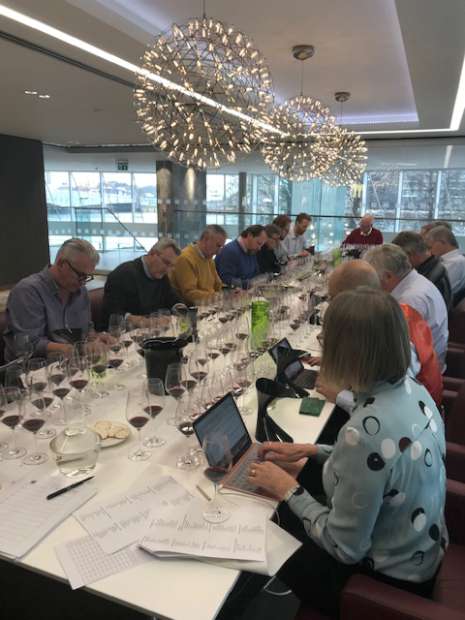
As you may recall, this is one of the UK wine trade’s longest-standing tasting groups. Originally established by Simon Loftus (former Chairman of Suffolk brewers Adnams) this tasting was held for over three decades in the charming seaside town of Southwold, but had to move once Simon and his colleagues had all retired - and the focus of Adnams turned back to brewing and away from wine. Jancis Robinson recalls that the first vintage that the group tasted was 1976. Early members of the group included the late, great Bill Baker and John Avery. Our longest-standing team member is the hugely respected Sebastian Payne MW of The Wine Society. The first vintage for me was 1990, so I’ve now been taking part in this great wine-tasting event for over a quarter of a century!
With our youngest member – Thomas Parker of Farr Vintners – now a Master of Wine, the group boasts 7 MWs. We feature 3 of the world’s most experienced and respected wine writers – Steven Spurrier, Neal Martin and Jancis Robinson - and the buyers of the UK’s leading fine wine merchants.
Running through the communes, here are the thoughts of Thomas and myself on the wines in each sub-region of Bordeaux.
Dry Whites
This was a very good group (20 wines tasted) with no signs of any premature oxidation and good balance of richness, acidity and oak. Unsurprisingly (but you never know with blind tastings), the winner was Haut Brion Blanc with the white wines of Smith Haut Lafitte and La Mission Haut Brion close behind.
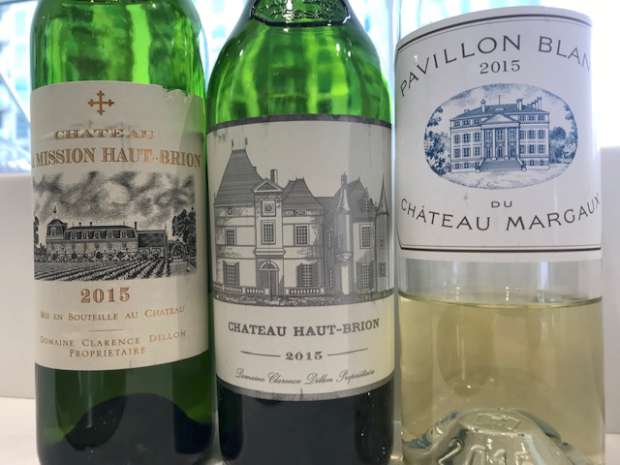
Sweet Whites
2015 is clearly a great and consistent vintage for Sauternes and Barsac. We tasted 27 of the top Chateaux with Yquem the winner. Doisy Daene and La Tour Blanche also made the podium with Suduiraut just behind. These wines showed great concentration, with the best having fleshy, ripe and tropical fruit tamed by vibrant acidity that retains their freshness. These sweet wines will age wonderfully, thanks to this structure, though the plump fruit at the core makes them delicious to taste even at this early stage. The current weak market for Sauternes makes many of these real bargains for a wine lover with a sweet tooth.
Satellite Appellations
This tasting is very much focussed on the classic villages of Bordeaux but we did put in a few “ringers” from off the beaten track. As per usual, the best of these was the Mitjavile family’s Roc de Cambes from the Côtes de Bourg. Special mention must also go to Denis Durantou’s Les Cruzelles and La Chenade. However, the clear winner of “best value wine of the tasting” must go to Chateau Carignan (from the commune of Cadillac). This was by far the lowest priced wine in the entire tasting, yet this plump and attractive Merlot-based charmer finished higher up the rankings than 100 bigger names. In fact, one member of the team bought 30 cases of it on the spot!
Saint Emilion
As usual, there was a wide range of styles in this uneven commune. The over-extracted “fruit bombs” tend not to be to the liking of our British palates so there were disappointing results for the likes of Pavie, Pavie Macquin, Magrez Fombrauge and a totally unappetising Monbousquet. These wines pushed the already ripe fruits character of the Merlot in 2015 and eschewed the naturally silky, ripe tannins of the fruit in favour of power, aggression and alcohol. We’ll come later to Ausone and Cheval Blanc, but Angelus, Valandraud and Le Tertre Roteboeuf all showed very well. But, our two stars of Saint Emilion this year were the stunning Canon with bright red cherry fruit and the wonderful Figeac. These are really sensational wines and it was only right that they tied for first place. Canon has fabulous purity with pristine fruit and sweet, silky, ripe tannins that gently frame a weightlessly intense core of fruit. Everything is already beautifully integrated, demonstrating the long and open drinking window this wine will have. The Figeac by contrast shows the more robust structure of Cabernet, but despite this there is great refinement. The tannins are ripe and frame a core of cool blue and black fruits that have a wonderfully savoury, moreish lift that is lacking in many other top right bank wines. Two fantastic wines.
Pomerol
Leaving aside the highly rated and highly priced Petrus, our two top Pomerols were (as usual) Lafleur and L’Eglise Clinet with Vieux Chateau Certan in third place. These three contrasting wines all harnessed the best aspects of the vintage, but in different ways. The Lafleur was glossy, chocolatey and soft, with unparalleled refinement in tannins and texture. By contrast the Eglise Clinet is a vin de garde, with a rich and bold structure that frames a dense core of black fruits. The Vieux Chateau Certan focused instead on elegance, with lifted fruits and bright acidity that adds a cool, savoury edge to the fruit and chalky nature to the tannins. These three all out-performed Le Pin in 2015 with very good performances from La Conseillante, La Fleur Petrus and L’Evangile.
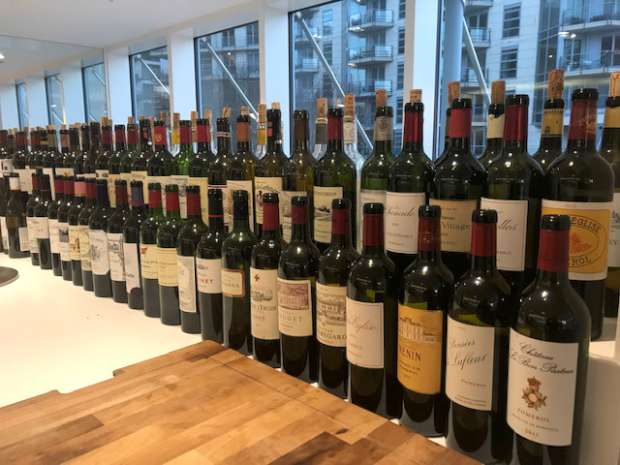
Second Wines
We didn’t taste all of Bordeaux’s second wines but did try many of the most popular names in the market. A few highlights here were :-
Esprit de Chevalier – Domaine de Chevalier’s second wine out-scored the grand vins of several Pessac-Leognan properties with a flight-winning performance. The plump, plummy fruit and integrated tannins are bolstered by a lick of sweet spice from the oak, making for a sensuous and approachable style that will drink very well in its youth.
Segla – the second wine of Rauzan Segla came in 7th out of 27 wines tasted from the Margaux commune beating many grand vins. Not yet released, this is a wine to look out for in the future. Elegant and aromatic, this floral wine has sweet red fruit at the core and delicate tannins, with bright acidity refreshing the palate and lifting the riper fruit into notes of dried flowers.
Réserve de Leoville Barton – leaving aside Les Forts de Latour, Petit Mouton and Pavillon Rouge, this was our top-scoring second wine in the Medoc after Segla, beating several classed growths along the way. This is very much in the style of the grand vin, unapologetically rich in blackcurrant and savoury spice, but with a restraint in tannins that offers early drinking pleasure with classic medocain style fruit.
Farr Vintners Pauillac – although we cannot say which lofty Chateau in the northern Medoc makes this wine, the Farr Vintners Pauillac was included in this year’s tasting. It outperformed many classed growths thanks to its sweet core of black fruit and integrated tannins. Unlike the classically structured 2014, this polished, seamless effort will provide great early drinking pleasure. This blind tasting re-enforced our view that our only “own label” wine is one of the greatest bargains at Farr Vintners. If only we could reveal who makes it…..
Pessac-Leognan
I’ll talk about Haut Brion and La Mission with the First Growths, but our flight winner here was Smith Haut Lafitte with Domaine de Chevalier a close second. A mention also to one of Bordeaux’s most improved properties with Les Carmes Haut Brion in third place. Smith Haut Lafitte harnessed the ripe elements of 2015, with glossy black fruits and supple tannins paired to sweet spices from the new oak. This is hedonistic and succulent without losing its sense of place. There is also a one-off striking black label and capsule replacing the traditional cream and blue. Domaine de Chevalier shared several elements with the Smith Haut Lafitte, but with more earthy, savoury notes and a slightly bolder tannic structure. The Carmes Haut Brion was marked in its difference, with wild herbs, sweet red fruits and a richly tannic structure suggesting this will need time to integrate and settle, but will then go on to have a long life ahead.
Margaux
This might be the best vintage that we have ever tasted for the commune of Margaux. There really were some brilliant wines here with Rauzan Segla, Pavillon Rouge, Brane Cantenac and Palmer all outstanding. The votes for top wine were incredibly close between Brane Cantenac and Rauzan Segla. In my view both Chateaux have possibly made their finest wines ever in 2015. The Brane Cantenac had a wonderfully classic style, with complex savoury aromatics, bold but ripe tannins and intense yet cool black fruits that drove through the palate. Supremely elegant, this is a must for lovers of classic left bank Bordeaux. The Rauzan Segla by contrast had much more refinement in tannic structure, with great polish and charm revealing fresh red and black fruits, hints of sweet spice and a building intensity through to a very long finish. This will drink well from youth, but has all the intensity and richness of structure to age. Pavillon Rouge was outstanding too in 2015, perhaps one of the best we have ever tasted. Seamless, refined and elegant, yet with all the ripe red fruits that are the hallmark of the vintage, this is testament to the efforts made to raise the quality of this wine in recent years.
Saint Julien
In the history of Southwold tastings this has probably been our most consistently good flight. We feature the same dozen properties every year and they never let us down. In 2015 they are all excellent with a fairly narrow gap between first place and last. In fact, last place in St Julien would have won the first four St Emilion flights! All the wines of this commune showed classic structure and balance with some admirable rich, ripe fruit that was sometimes lacking in the more northern appellations of the Medoc. Our winning wine here this year actually out-scored three of the First Growths. A quite outstanding performance by Léoville Barton, which had rich, ripe cassis at the core but retained the classic medocain tannins and savoury spices to bring complexity in both texture and flavour. The power and refinement lie perfectly in balance for this wine, which looks to have a very bright future. The 2 other Léovilles were in second and third places, the Poyferre a hedonistic, smoky and ripe delight while the Las Cases was a real sleeper, with firm tannins and a touch of austerity that would suggest it will reward patience in the cellar.
Pauillac
The 3 Léovilles were our winners in St Julien and the 2 Pichons were our winners in Pauillac! Pichon Lalande came out on top thanks it’s wonderful balance of dark fruit and vibrant acidity, that tamed the ripeness and gave superb lift. The tannins are polished but retain Cabernet typicity, and the oak is judiciously used so that it supports rather than dominates the fruit. The Baron had bolder tannic structure, richer fruit and a denser core. It may need more time to unfurl and reveal its potential, but it will then go on to drink well for several decades. A classic Lynch Bages performed excellently to clinch third place, similar in style to the Baron but with less exoticism and more deep black fruit. Another one to lay down for the future.
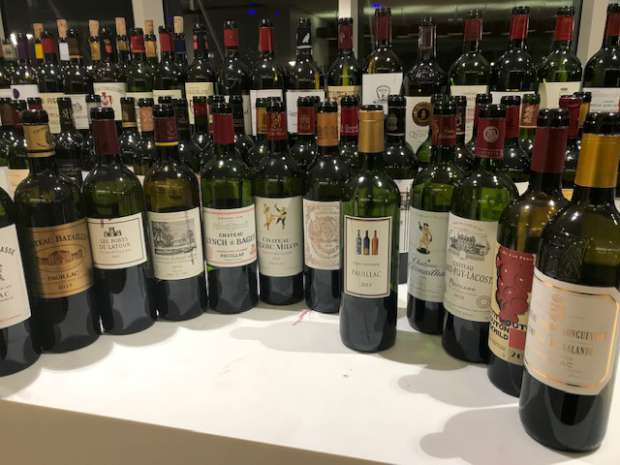
Saint Estèphe
Our final commune produced one of the shocks of the tasting – and not for the first time. Plucky little Chateau Meyney performed far above its status coming in second behind the blockbuster Montrose with Calon Segur and Cos d’Estournel just behind. Whilst the Montrose showed great refinement, taming its bold tannic structure with sweet spices and glossy black fruit, the Meyney displayed several characteristics that we often associate with its loftier neighbours. Chewy, dense tannins and powerful black fruit, with real potential for the future. The Calon Segur was elegant, bright and lifted, unforced and therefore in perfect balance. Similarly the Cos d'Estournel was bright and silky, a clear departure from the heady, warmer wines from 2009 and 2010.
The First Growths
Of the 5 left bank first growths my own favourite – and also that of the group as a whole - was the fabulous Haut Brion which tasted like the essence of Graves, full of smoke, spice and tar. Equally magnificent was sister property La Mission Haut Brion, rich and bold in fruit, with supple tannins integrated into the sweet spice of the oak, allowing the hedonistic core of cassis and cherries to dominate. However, our overall winner of the entire tasting – outperforming the big 5, Cheval Blanc and even Petrus, was 2015 Chateau Ausone. This outstanding wine had a particularly deep colour, exuding notes of liquorice, incense and bramble fruits. The palate was pure cashmere, with ultra-refined tannins gently framing a powerful but tightly wound core of black fruit. This unfurled in the glass, standing up to the exotic spices from the oak and pushing through the rich tannic structure. The finish was long and with great drive, showing great potential for the future, if you are lucky enough to own some of the tiny production from this Chateau. There was also an excellent performance by Angelus which came third overall in the entire tasting and certainly reminded us of why this great Chateau was promoted to First Growth in 2012.
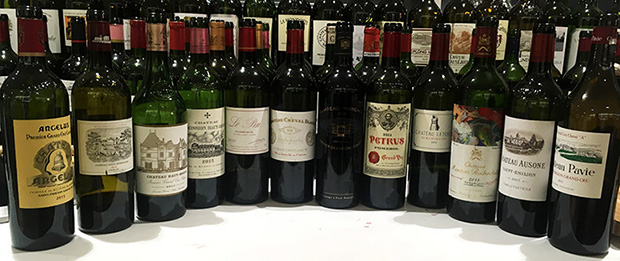
Conclusions
Overall best wine : Ausone
Best Left Bank First Growth : Haut Brion
My Favourite Wines : Canon, Figeac, Eglise Clinet, Smith Haut Lafitte, Domaine de Chevalier, Brane Cantenac, Rauzan Segla, Léoville Barton, Pichon Lalande, Montrose.
Best Value Recommendations : Carignan, La Chenade, Esprit de Chevalier, Ségla, Baron de Brane, Reserve de Léoville Barton, Farr Vintners Pauillac, Meyney
2015 surprised us in some ways, but not in others. Though there are some great wines to be found in every appellation, this is a very good, rather than a great vintage. The style is soft, supple and approachable and there is an almost universally ripe fruit character at the core. What is perhaps lacking is the intensity, or intrigue of the great vintages when looking at the region as a whole. This does have its benefits, however. Many of these wines are close to being drinkable already, particularly the second wines, which showed very well from the top estates. This will therefore provide a great opportunity for drinkers who have several vintages in the cellar that will require time, such as the 2010 and 2014 with the 2016’s on their way. This vintage is a real charmer, with more ripeness than a similarly early drinking vintage such as 2012. This reminds us of the 1985s, and perhaps 1995 and 1953, though with the refinement and improvements that modern winemaking and viticulture has afforded the Chateaux.
Our conclusions following this tasting were that it probably stops just short of being a truly great vintage yet it does contain several genuinely great wines. At the end of the tasting we asked everyone to rank it against the previous 15 vintages that the Southwold Group has tasted and this was the result :-
1 – 2010
2= 2009
2= 2005
4 – 2000
5 – 2015
6 – 2001
7 – 2014
8 – 2012
9 – 2008
10 – 2006
11 – 2003
12 – 2004
13 – 2007
14 – 2011
15 – 2002
16 – 2013
What’s for sure is that 2015 is a better vintage than the 4 years that preceded it. However, it is not as great as the magnificent and classic 2010 vintage nor the opulent and fleshy 2009. It’s probably just behind 2005 and 2000 and ahead of the lovely 2001’s. We are already looking forward to January 2020 when 2016 will be the latest vintage for us to assess.